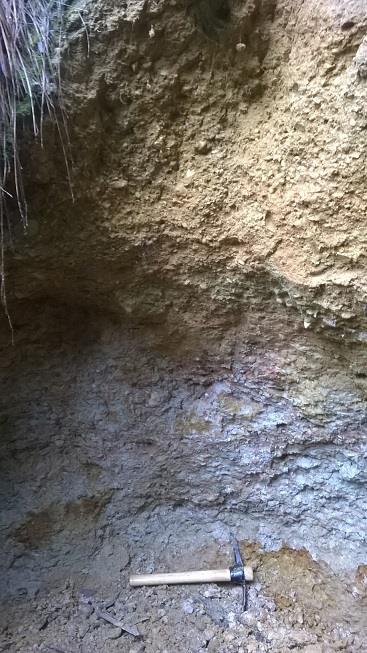Thumper
Ben
Hi all, Ive lurked for a bit, first post 
I occasionally make it to Echunga area from down Aldinga way, and pan or sluice in the Chapel Hill fossicking area. I love getting out, especially as its a way to connect with one of my boys heading into the teenage years!
I managed to get a few specks last time I went, from alluvium near the old stamping battery, but only averaging one speck per large bucket. I suspect it was actually tailings from inefficient extraction back in the abundant days. After voting yesterday I headed out with #1 son and we explored a bit further, lugged our stuff from National Dam to German Dam and back again. Amazing all the farm dams nearby are full, but the Chapel Hill dams are pretty low, and the creek contains hardly even a puddle, let alone running! I still tested out the sluice however, just had to bucket water. Im sure its way less ideal than a steady flow but hey.
I tried a likely-looking spot of ferrous conglomerate overlying some pretty clean-looking sand halfway between the dams, and retrieved only the tiniest speck (like, microscopic almost!) from the sand. I thought the conglom should have been the go from the geology Ive been researching, but then again the sand was pretty useless also. We headed back down to a deep pit next to National Dam, and I extracted a bucket of conglomerate with ferrous clay matrix, and a bucket of similar conglomerate in a white clay matrix. A classifier sieve and bucket did a good job of puddling the clay in both cases, but absolutely no gold whatsoever.
Does anyone familiar with this area have a good handle on what strata holds the gold? I know its supposed to be in ferrous conglomerate overlying bedrock, but I havent found any bedrock anywhere, even in the deepest spots of the valley. Ive attached a pic of the walls in the big hole where I got the ferrous clay conglom (top) and white clay conglom (bottom). The wall is about 1.8m high.
Cheers! Ben.

I occasionally make it to Echunga area from down Aldinga way, and pan or sluice in the Chapel Hill fossicking area. I love getting out, especially as its a way to connect with one of my boys heading into the teenage years!
I managed to get a few specks last time I went, from alluvium near the old stamping battery, but only averaging one speck per large bucket. I suspect it was actually tailings from inefficient extraction back in the abundant days. After voting yesterday I headed out with #1 son and we explored a bit further, lugged our stuff from National Dam to German Dam and back again. Amazing all the farm dams nearby are full, but the Chapel Hill dams are pretty low, and the creek contains hardly even a puddle, let alone running! I still tested out the sluice however, just had to bucket water. Im sure its way less ideal than a steady flow but hey.
I tried a likely-looking spot of ferrous conglomerate overlying some pretty clean-looking sand halfway between the dams, and retrieved only the tiniest speck (like, microscopic almost!) from the sand. I thought the conglom should have been the go from the geology Ive been researching, but then again the sand was pretty useless also. We headed back down to a deep pit next to National Dam, and I extracted a bucket of conglomerate with ferrous clay matrix, and a bucket of similar conglomerate in a white clay matrix. A classifier sieve and bucket did a good job of puddling the clay in both cases, but absolutely no gold whatsoever.
Does anyone familiar with this area have a good handle on what strata holds the gold? I know its supposed to be in ferrous conglomerate overlying bedrock, but I havent found any bedrock anywhere, even in the deepest spots of the valley. Ive attached a pic of the walls in the big hole where I got the ferrous clay conglom (top) and white clay conglom (bottom). The wall is about 1.8m high.
Cheers! Ben.




